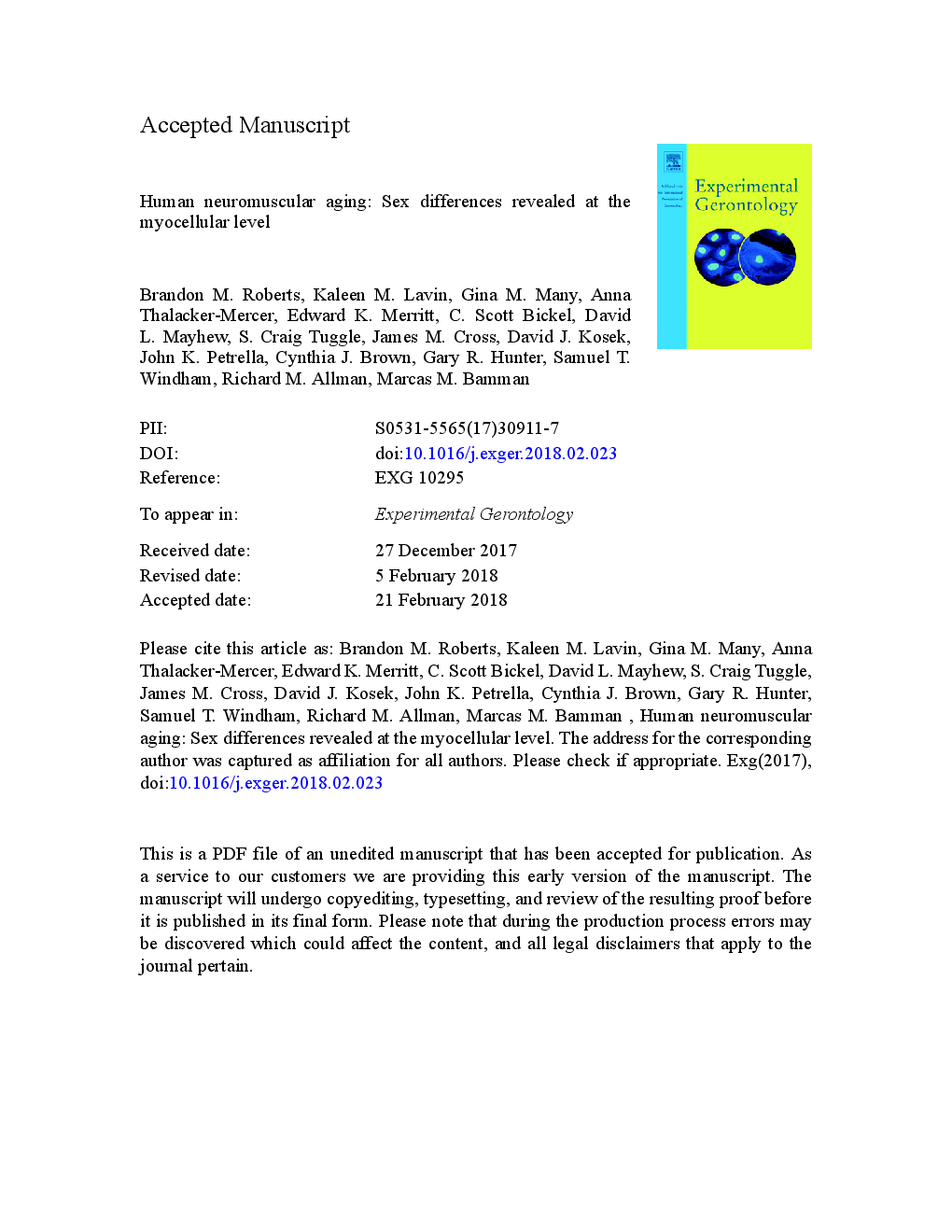ترجمه فارسی عنوان مقاله
پیری انسانی عضلانی: تفاوت جنسیتی در سطح قلب وجود دارد
عنوان انگلیسی
Human neuromuscular aging: Sex differences revealed at the myocellular level
| کد مقاله | سال انتشار | تعداد صفحات مقاله انگلیسی |
|---|---|---|
| 125968 | 2018 | 32 صفحه PDF |
منبع

Publisher : Elsevier - Science Direct (الزویر - ساینس دایرکت)
Journal : Experimental Gerontology, Volume 106, June 2018, Pages 116-124

